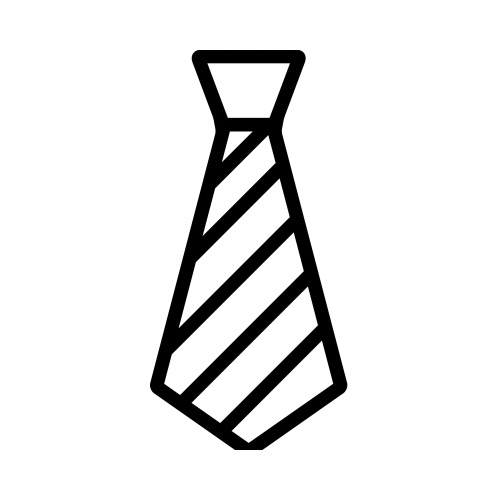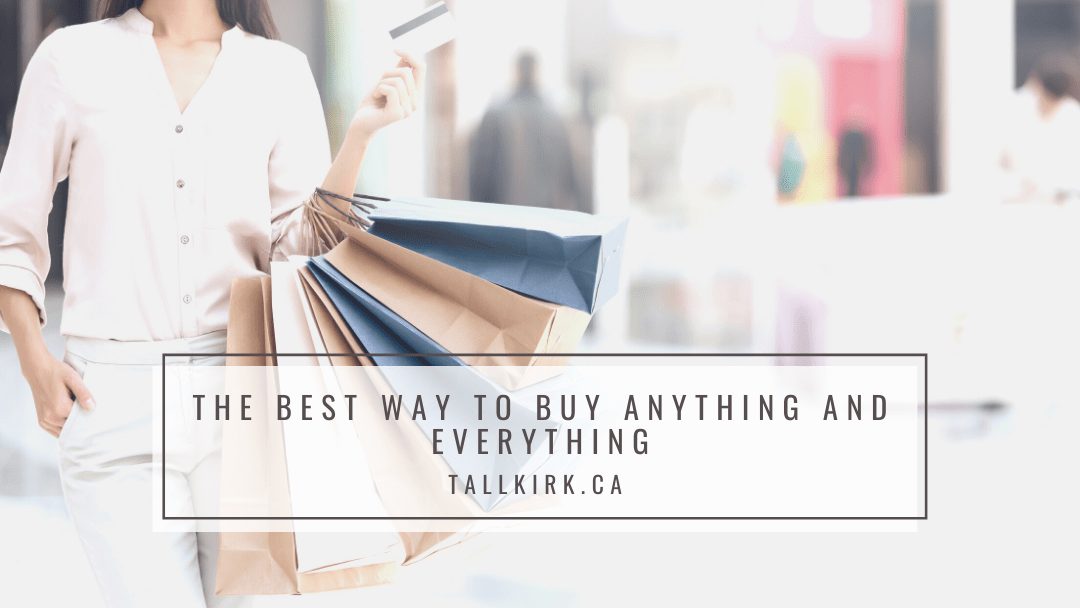When you go to buy something, there are three doors you can take.
But you’re only aware of two. And the third door, which no one ever talks about, is better because it blends the best bits of the first two.
We’ll get to door number three, but let’s start with door number one…
The first way is saving up and paying cash.
Paying cash has some advantages:
- You can often negotiate and get a better price
- You don’t have to ask anyone for a loan
- And you don’t pay any interest
But there are drawbacks too:
- You make very little interest on the cash you’re saving in a savings account
- And once you spend it, it’s gone for good. You miss out on all future interest that cash could have earned
Lots of people underestimate the downsides of paying in cash because they’re somewhat hidden. It’s not that using cash is a bad decision, it’s just that you miss out on even better opportunities.
We’ll get to those, but first let’s talk about door number two.
The second way is taking out a loan.
This again, has its advantages:
- You don’t need the cash
- The cash you do have can stay invested
And some disadvantages:
- You pay interest (sometimes a lot, depending on the rate and the length of the loan)
- And you have to make regular payments to someone else (and if you don’t, they’ll take your car or house or whatever assets you have)
The problem with using debt in the long run is that you end up paying more for everything (the initial price and all the interest) and if you’re using loans so you can invest more money in the market, if things go south, you can end up in a really bad spot and get your assets repossessed.
Sometimes you have to use debt to some extent, like with a mortgage or student loans, but using it as a purchasing strategy generally increases your costs and comes with risks.
The Big Problem With Both Ways
Whether you use cash or loans to buy things, the big issue is that your cash is always flowing to someone else and you always end up back at zero.
You save up, pay in cash…back to zero. You take out a loan, pay it back over time…back at zero.
And in the meantime, you’re either paying interest to someone else, or missing out on interest you could be earning yourself.
This brings us to door number three…
The third way is to pay in cash, while using a loan from yourself.
Imagine, instead of saving up money in a savings account, you put your money away into what we’ll call a Wealth Building account.
Once invested in this account, your cash will grow at a steady rate each year and never stop until the day you die. No more missing out on future interest.
Now, the reason that’s possible is that with this account you’re not going to take money out. The money is going to remain invested at all times.
Instead, you’re going to take out a loan against the cash value in the account. So instead of going to a bank for a loan, you’re going to loan the money to yourself. No more paying interest to someone else.
And even better, no more starting back at zero every time, because once you’ve repaid the loan to yourself, you’re the one with all that money, not someone else. And you can turn around, and loan it back out to yourself again and again and again.
The advantages and disadvantages of this method.
Here again, we’ve got advantages:
- You don’t miss out on any interest while you save or after you spend
- You don’t pay interest to anyone else. You pay it to yourself
- You don’t have to ask anyone else for a loan or deal with the hassle
- You never end up back at zero. Instead you always end up further ahead
- And you still get the negotiating power of paying in cash upfront
The only two disadvantages:
- You have to make the initial investment to fund the account
- And you have to be disciplined about repaying the loans you take out
Let’s go through the example of buying a $25k car.
This example will be simplified a bit, but give you the rough idea.
With cash:
- You negotiate the price down to $20k because you’re paying cash
- You save $5k a year for four years
- You buy the car
- You make no interest
- You start saving cash immediately after so that you can afford to buy your next car the same way
With a loan:
- You pay the full $25k
- You take out a car loan from the bank and make regular payments plus interest
- You pay over $25k for the car
With cash, using a loan from yourself:
- You accumulate $20k in a Wealth Building account
- You negotiate the price down to $20k because you’re paying cash
- You make regular payments to yourself to repay the loan and interest
- You earn steady returns on your cash from the day you start saving, every year you have the car, and every year after
So with cash, you pay $20k, miss out on interest you could’ve earned and always have to save up money for your next purchase. With a loan, you pay over $25k including all the interest on the loan, and when you’re finally done paying back the loan, you end up back at zero, just in time to take out the next one.
With the third way, you pay $20k, earn interest every year, and when you’re done repaying the loan to yourself, you have way more money than when you started that’s already invested and compounding in value each year, and you can do the whole thing over again on any other purchase you need to make.
Aren’t you paying twice?
A common objection to this third purchasing method is that if you think about it wrong, it seems like you’re paying twice. Once when you put the money into the Wealth Building account and a second time when you repay the loan.
The issue here is that when you think about just one example in isolation, you lose sight of the bigger picture. Let’s zoom out to look at your whole financial picture and how this method can be used to build wealth throughout your entire life.
Welcome to the Whole Life Wealth Building System
Let’s start with the fact that everyone has a need to save for retirement and you’re going to need to save a bunch.
So you can think of the initial investment into the account as money you’ll use in retirement. So say you drop in $10k every year for 10 years for a total investment of $100k. That’s money you’ll get to take out in retirement and never pay back if you choose. Only you’ll get way more than $100k with all the compounding and dividends, especially if you start early.
When you look at it this way, you can see why you’re not paying twice. That initial investment is part of your retirement savings, money you would’ve saved anyway.
Only, ordinarily, you put it away in an RRSP and can never touch it. When you use this method instead, you can put that money to work during the course of your lifetime and save a ton of money along the way.
How to Maximize the Value of this System by Using it for Anything and Everything
As we’ve already covered, using this method to make your purchases allows you to take advantage of paying upfront in cash and eliminate the downsides of not being able to invest that cash.
To get the most value out of this system, you need to put the money to work as much as possible, starting with smaller bills and purchases and working your way up.
- Pay all bills annually.
The best place to start is with any bill you can pay annually. Subscriptions. Insurance. Phone bill. Property taxes. Basically any bill you pay monthly can also be paid annually and most companies will happily give you a discount if you call them up and offer to pay it all in cash.
So you take out loans from yourself, pay your bills annually and save a bunch off the top. And then instead of making regular monthly payments to someone else, you make those payments back to yourself and end up further and further ahead each year.
- Bigger purchases like appliances and cars.
The next place is with any purchase you would normally make by taking out a loan. For all the reasons we’ve covered, it makes way more sense to take out a loan from yourself, so you don’t pay someone else interest and all the cash flows back to you.
Again, you get the cash discount off the top, make the regular payments to yourself, and come out ahead with a bigger balance to keep moving up the ladder.
- Other investments, like funding your TFSA.
Another huge advantage to using this system is that you can also use it to fund your other investments.
So at the beginning of each year, you can pop out your maximum TFSA contribution, get that invested right away, capture all the growth from that year, and then instead of regularly contributing to your TFSA, you make those payments back to yourself. This way you get the growth from being fully invested from the start of the year and all the regular growth from the Wealth Building account.
- Life’s biggest purchases like tuition, homes and retirement.
Finally, as your wealth continues to compound, you will be able to use this account to fund down payments on homes and other real estate, use it to pay for your kids’ education, and eventually fund your retirement.
Summing This All Up
The two most common ways to make purchases suck. You either pay interest to someone else or miss out on interest you could’ve made yourself.
But luckily, there’s a third way to go about making purchases that allows you to get the best of both worlds. By using the Whole Life Wealth Building System, your cash gets invested and stays invested over the course of your life, leading to huge returns over time, and in the meantime, you can take out loans from yourself rather than a bank to fund your purchases.
This allows you to get all the benefits of paying cash without the hidden drawbacks and all the advantages of using a loan without the costly disadvantages.
And all the growth is tax-advantaged. Did we mention that? That part is good, too.
If you’re interested in learning more about how to use this system to make all your purchases, book a meeting or shoot me an email at hey@tallkirk.ca with the subject line Whole Life Wealth Building. I’d love to show you the details and how I use this system in my own life.

